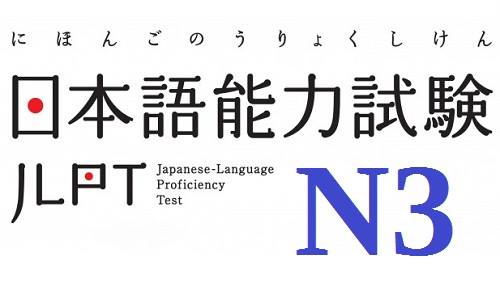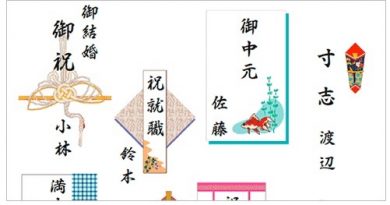JLPT N3 Grammar lesson 1
JLPT N3 Grammar lesson 1. Hi everyone! In this article, Learn Japanese daily will start to introduce you to the JLPT N3 Grammar. Let’s learn about the first 5 structures.

Contents
N3 Grammar Vれる:
Principles :
Group I: Vu → a+れる
Group II: Vる+られる
Group III: する → しられる くる → こられる
Explanation:
Vれる is the passive form of the verb. It means the verb (V) acts upon the subject. The passive form Vれるis usually used when the speaker doesn’t or doesn’t want to mention the subject.
For example:
この小説は1980年に書かれています。
Kono shousetsu wa 1980-nen ni kakarete imasu.
This novel was written in 1980.
祇園祭は、毎年7月に行われます。
Gionmatsuri wa, maitoshi 7-gatsu ni okonawaremasu.
Gion Matsuri is held in July each year.
春は花の季節と言われています。
Haru wa hana no kisetsu to iwarete imasu.
Spring is said to be the flower season.
Structure 2:
Nに+Vれる
Explanation:
The subject is acted upon by (N) with action V.
When talking about N – the initiator of the action that acts upon the subject, we only have to add N (the one who does action V) before the passive form of the verb.
For example:
あの子は母に𠮟れました。
Ano ko wa haha ni shikaremashita.
That child was scolded by his mother.
この歌は多くの歌手に歌われています。
Kono uta wa ooku no kashu ni utawarete imasu.
This song is sung by many singers.
Structure 3 :
V(さ)せてください
V(さ)せてもらえますか
V(さ)せてもらえませんか
Explanation:
Please let me do the action V.
This structure is used to ask for permission to do something politely.
Principles:
Vさせる:
Group I: Vu → a+せる
Group II: Vる+させる
Group III: する → させる/ くる → こさせる
てもらえますか and もらえませんか is equal to ください means asking for permission.
For example:
窓の近くの席に座らせてください。
Mado no chikaku no seki ni suwarasete kudasai.
Please let me sit by the window.
このスポーツ大会に参加させてください。
Kono supootsu taikai ni sanka sasete kudasai.
Please let me participate in this sporting event.
先に帰らせてください。
Saki ni kaerasete kudasai.
Please let me go home first.
Structure 4 :
Vないと
Vなくちゃ
Explanation:
The action V has to be taken.
This is about a compulsory action, if not doing this, things will turn out badly. It’s similar to Vなければならない/Vなければいけない.
For example:
今日は両親が来るから、早く帰らないと。
Kyou wa ryoushin ga kuru kara, hayaku kaeranaito.
My parents will come here today, so I have to go home early.
もうすぐ雨が降りそうです。傘を持たないと。
Mousugu ame ga furisoudesu. Kasa wo motanaito.
It looks like it will rain any minute. I have to bring an umbrella.
明日漢字テストがあるから、勉強しなくちゃ。
Ashita kanji tesuto ga aru kara, benkyou shinakucha.
I have to study because I have a kanji test tomorrow.
Structure 5 :
V(て)+ちゃう
V(で)+じゃう
Explanation:
The action V is already done.
These structure is used to show regret because someone did something (accidentally, not by purpose). It is also used to show the completion of an action (to finish up an activity).
For example:
食べてしまった → 食べちゃった
Tabete shimatta → Tabechatta
To eat up (nothing left).
帰ってしまう → 帰っちゃう
Kaette shimau → Kaecchau
(if you don’t hurry) I will go back.
飲んでしまおう → 飲んじゃおう
Nonde shimaou → Non jaou
Drink it up.
混んでしまって → 混んじゃって
Konde shimatte → Kon jatte
It’s all mixed up.
Above are everything about the JLPT N3 Grammar lesson 1. If there is any structures that you are confused about, or don’t understand completely, feel free to comment below.
Check out other JLPT N3 Grammar lessons in section: JLPT N3 Grammar
reference source : Ngữ pháp N3


Thank you for the useful and educative site.
I would like to ask what is Vu—a ?
Vu mean Verbs which end with u column (く、す、ぬ…) . Ex : かくー>かか + れる。のむー>のま + れる
Verb which end with う is changed to わ かう -> かわれる
its quite difficult to read all kanji.it would be better if Kanji word was also written in Hiragana inside bracket like in Vocabulary
🙁
oki Prarthana Bataju, we will create romaji under Japanese sentences. So if you need to see how to read unknown Kanji